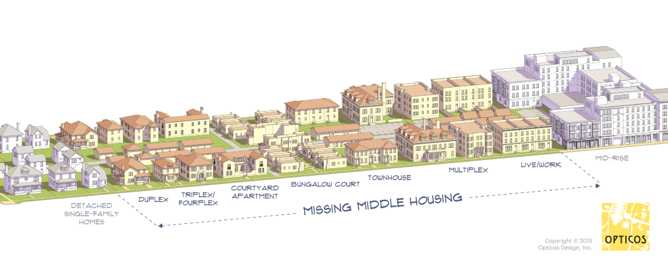The 11 themes are just as relevant today, if not more so.
Single family homes continue to be torn down and replaced with much larger, more expensive homes, driving up the median income and making Newton more and more exclusive. Single family home size in Newton grew by 70% from 2005 to 2014. This is true for all housing types in Newton. As the graphic below shows, the average housing unit size in Newton has increased dramatically as developers have attempted to maximize the return on very expensive land as allowed by existing zoning. This data is in direct contrast with shrinking household size.
Opportunities for multi-family housing are limited as most of the residential land in the city is zoned only for single-family homes. This leaves few opportunities to gradually increase housing or provide other housing options. When multi-family housing does get built it tends to be in large developments.

Current zoning does not provide opportunities or incentives for “missing middle” housing. This house-scale housing with multiple units exists successfully in some areas of newton, providing additional housing options and price points. However, this type of housing is not permitted anywhere by-right and often is prohibited.

Increasing home prices and lack of housing options have contributed to a dramatic decrease in the under 44 population in Newton. The lack of diversity in housing options and price points also adds to the challenge of attracting new businesses to Newton, as there are limited options for their employees to live here. Rising median sales prices for homes in Newton also mean many homeowners could not buy their home today, seniors have limited options for downsizing, and it is all but impossible for children to stay in Newton when they move out of their family home.

Many of Newton’s village centers have lost some of their vibrancy: zoning regulations make it difficult to add housing and parking regulations can often be a barrier to small businesses.
In recent years the conversation around climate change has become much more urgent and zoning has not caught up. The City’s Climate Action Plan adopted ambitious goals, and since buildings and vehicles make up the majority of our greenhouse gas emissions, zoning changes are necessary to achieve these goals. Current zoning does not incentivize smaller, more energy efficient housing or prioritize housing near walkable village centers and transit.

